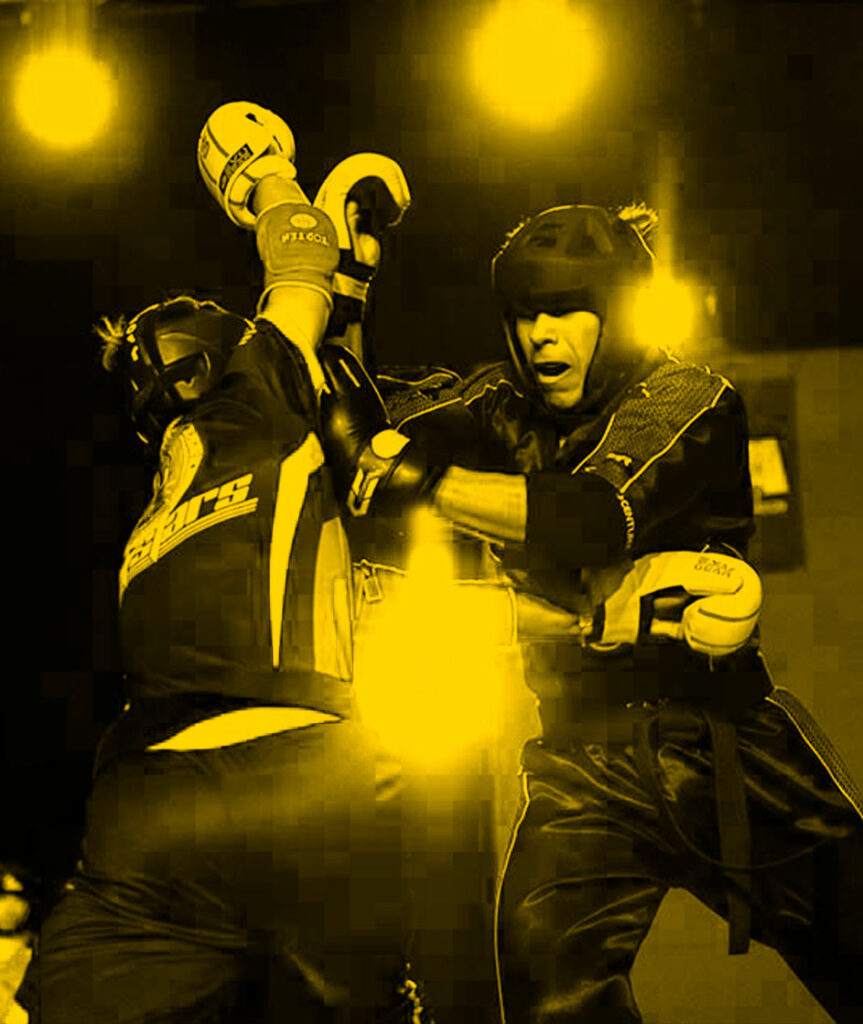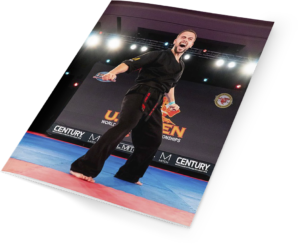CLASH Sparring was introduced at the US Open ISKA World Martial Arts Championships in 2013 and is a big hit. Competitors participating in CLASH sparring get a chance to compete in a new form of point sparring that allows competitors to score up to 3 times in a CLASH and is similar to sparring in the dojo. CLASH divisions happen immediately after the point sparring divisions which makes it like getting to compete in double eliminations at the event.
RULES
- Each match is 90 seconds, running-time, total points.
- Points may be scored by attacking and/or by countering an opponent’s attack.
- Each attack (and/or counter) is limited to a total of three (3) techniques per clash plus one (1) “disengaging” strike. Full explanation of what defines “three techniques” and a “disengaging” strike provided below in the complete rules.
- Competitors may score multiple points during each clash for successful attacks and/or counter strikes and combinations.
- Every kick that scores, earns two-points. Every hand strike that scores, earns one point.
- Clash Example 1: “Fighter A” attacks, scoring* cleanly with his lead leg roundhouse kick followed immediately by a backfist / reverse-punch combination that also scores.* “Fighter B” manages to counter by scoring* cleanly with his own reverse punch before “Fighter A” can disengage. This clash will yield a 4-1 point advantage for “Fighter A”.
- Clash Example II: “Fighter A” attacks and scores* with a backfist. Before “Fighter A” can disengage (move out of range), “Fighter B” scores* with a reverse punch counter and follows with a back leg round house kick that scores* to the head as “Fighter A” retreats. This clash will yield a 3-1 advantage for “Fighter B”
- Competitors are expected to separate (break) after each clash and then continue sparring (re-engage). Failure to separate will result in having the referee “break” the fighters and may warrant penalization or disqualification.
- Rules regarding uniform, contact and legal targets are identical to those for Point Sparring
- Rules regarding legal techniques and penalties are identical to those for Point Sparring with following general exceptions Please see complete official rules.
- Hook Punches and Uppercuts are prohibited.
- Falling down will result in your opponent being awarded one point
- Leaving the ring will result in your opponent being awarded one point
- Clinching or stalling of any kinds will result in your opponent being awarded points
- Two judges and one referee will officiate each match.
- The referee will control the action and be the arbiter of safety and fairness.
- Judges will keep a record of scoring strikes on hand held devices that will help specify their vote for a winner at the conclusion of each match.
- A draw decision by the two judges will be decided by a “sudden victory extension” decided by the first scoring clash.
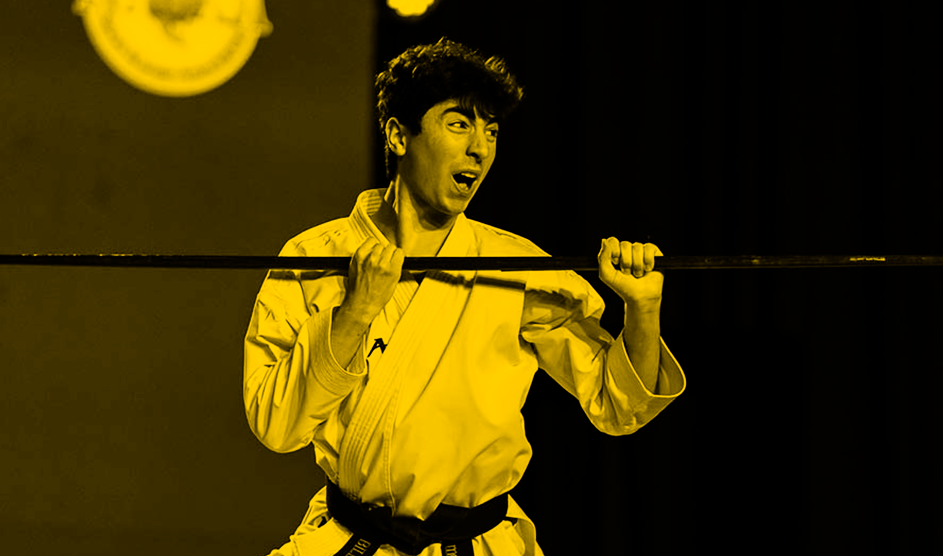
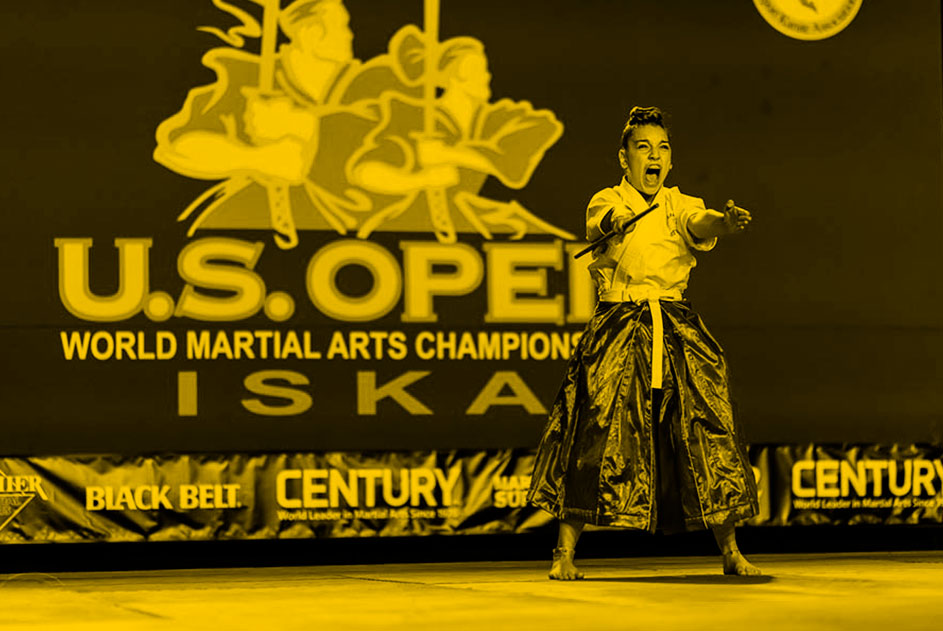
In addition to the head hear, a face shield is required for all competitors 17 yrs. & under. Chest Guard: All 17 and younger competitors must wear an approved chest protector in sparring.
The chest guard must sufficiently cover the abdomen and upper chest such that the sternum is completely protected. Rib guards that cover only the abdomen area are not approved chest guards. Insufficiently padded gloves, foot, chest and head hear will not be allowed. Equipment must be in a good state of repair and must be free of heavy taping, tears or any other repairs that may cause injury. The tournament’s official rules arbitrator ultimately determines the approval or denial of the equipment. A properly fitted mouthpiece is required. Shin pads, elbow pads and rib/chest guards are highly recommended for additional safety to all sparring competitors in all divisions.
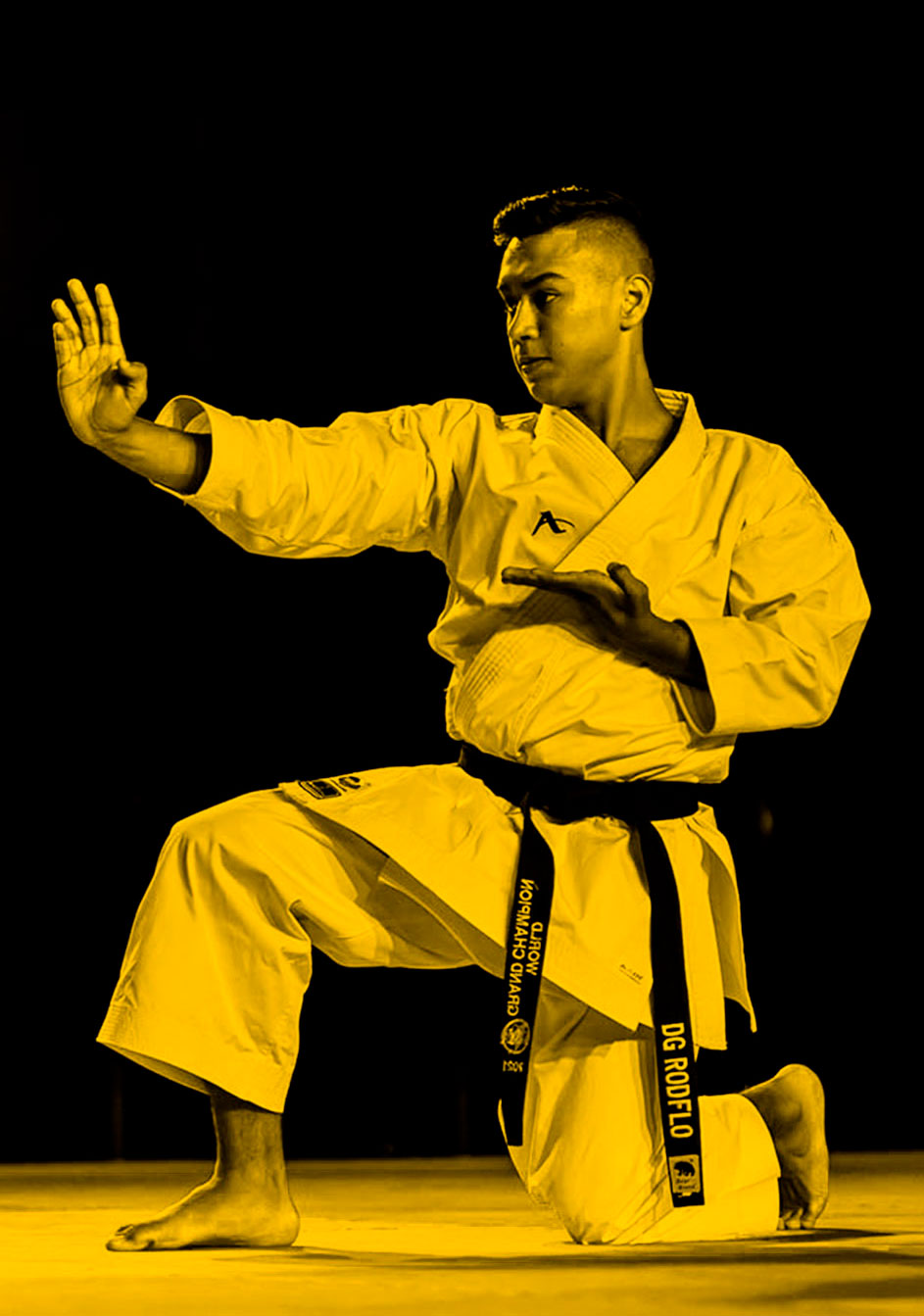
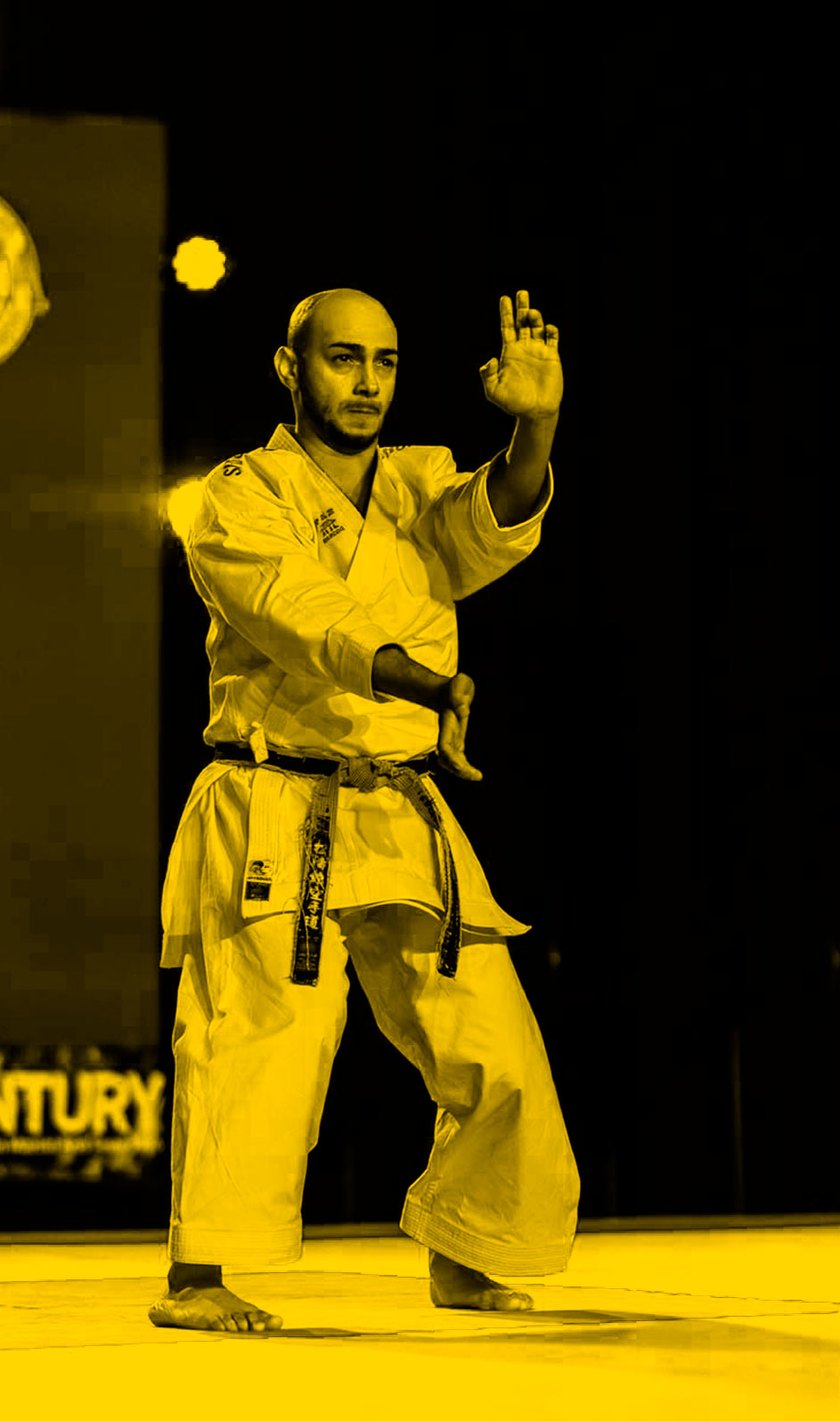
OFFICIALS: Each ring should have a REFEREE, two JUDGES, and a TIMEKEEPER.
REFEREES: The referee is the most experienced official in the ring and is thoroughly versed on the rules and order of competition.
He/she promotes the safety of the competitors, enforces the rules and ensures fair play. To this end, he/she starts and stops the match, makes all decisions regarding the clash determinations, makes penalty decisions, administrates the voting of the other judges, communicates clearly with all officials, competitors and coaches, and announces the winner of each match.
The referee has the power to issue cautions, warnings, award penalties or issue disqualifications. Referees have the power to issue time-outs. A competitor can ask for a time-out, but it is the determination of the referee to issue one.
JUDGES: The judges determine and tally points, and vote for a winner.
TIMEKEEPER: The timekeeper starts time at the command of the referee and announces when 90 seconds of “running time” has elapsed (at the 75 second mark, the time keeper will shout out “FIFTEEN SECONDS!”). The timekeeper will also monitor and adjust the “running time” according to the refereed specified “timeouts”.
PROTEST: A competitor has the right to protest an infraction of the rules or if a possible mistake was made (not a judgment call). If a competitor wishes to protest, he/she should first let the referee know he/she believes there has been an infraction of the rules or a mistake has been made. The referee will summon the arbitrator to the ring (if the referee cannot properly settle the protest to the players satisfaction) to render a decision. All protests must be made in an orderly, proper and sportsmanlike manner. All protests must be made immediately. Protests are not allowed once competition has resumed (after the fact protest). A competitor may be penalized or even disqualified if he/she is protesting improperly or without proper cause.
LATE ENTRIES: Once a division has the first divisional match has started) no competitor/s can be added to that division. BE ON TIME! Only exception to this rule is the “Fairness Rule” at the end of this rules summary.
THE RING: The size of the sparring adult black belt rings shall be approximately 20’ x 20’. Starting lines should be marked approximately six feet apart in the middle of the ring. Additionally, each ring should be posted with a ring number visible to competitors, officials, and medical personnel from across the floor. All youth and under black belt adult rings can be a minimum of 16’ to a maximum of 20’.
WEIGHING-IN: It is mandatory for all adult sparring competitors – who are in weighed divisions – to weigh in before competition. Only one official weigh-in is required. All competitors must compete in his/her weight division. A competitor cannot compete up or down in another weight division for which he/she has not made the proper weight. It is the responsibility of the tournament personnel to weigh and properly record the competitor’s weight. If a competitor is caught falsifying their weight, they will be disqualified.
ORDER OF COMPETITION: Once the final call for the sparring division are made at ringside and the seeds have been taken out (if seeding is required) the division is ready to be set up. The competition cards should be collected and counted (if competition cards are not used, count the competitors) to see if byes are needed. If byes are needed, they will be picked randomly (See bye chart to see how many byes are needed). Matches should always be selected by random, but certain allowances may be given to competitors from the same school or team that is matched up in the first round of competition. They may be separated randomly from each other in the first round if possible. (Competitors cannot pick whom they want or do not want to spar.) In the youth division, the competitors should be lined up by height (Smallest to the tallest) and split into tall and short divisions if required or offered. Determining tall and short divisions is for safety reasons, not just to split the division equally. A true break in size should be found to determine the taller competitors from the shorter competitors. Once the tall and short divisions are determined by height, determine who spars whom by random draw. Consideration should be given to competitors who are from the same school or team that have been drawn to spar each other in the first round.
NOTE ON AGE DIVISIONS: Adult sparring competitors 30 & older has the option to compete down one age division.
Example: A 30 year old competitor can compete in the 18-29 year old divisions, a 40 year old competitor can compete in the 30-39 division etc. A competitor cannot compete up in an age division.
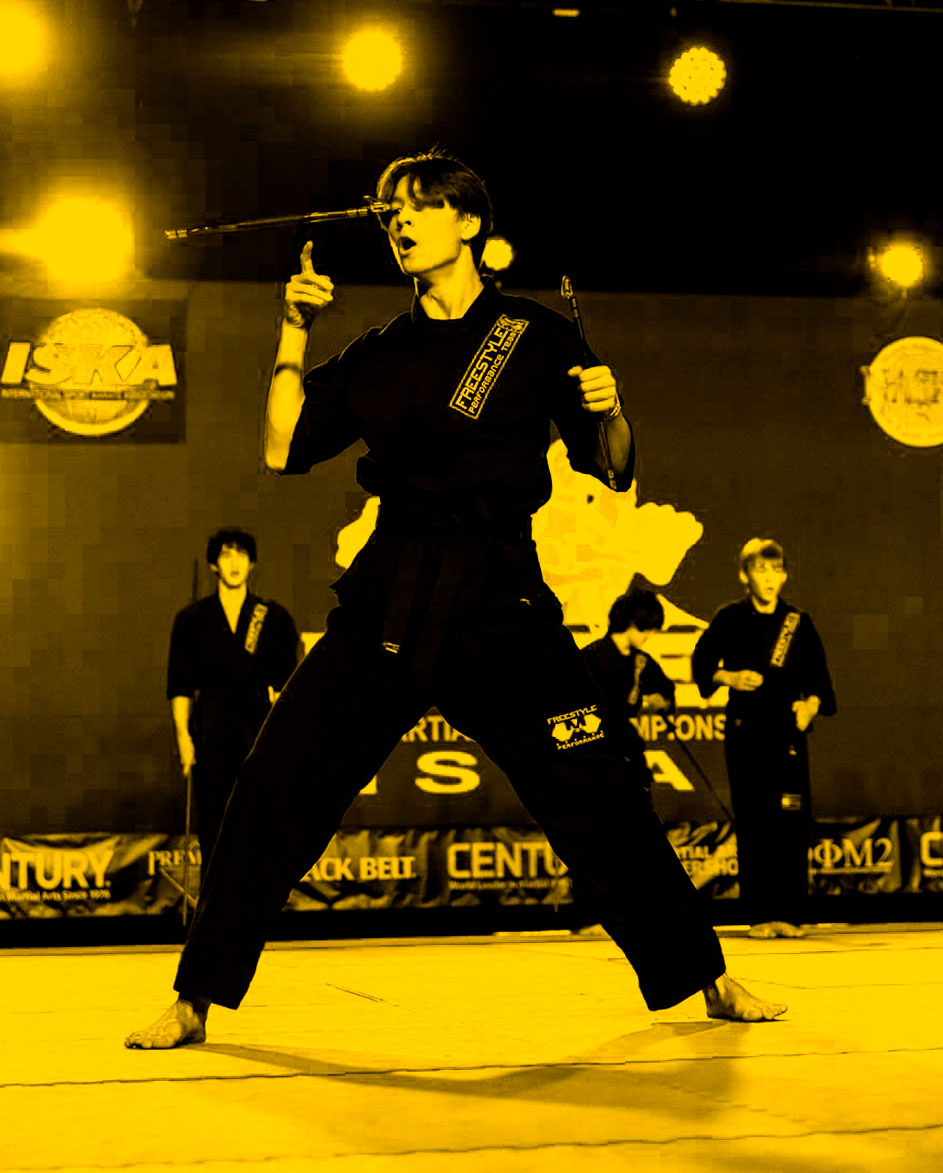
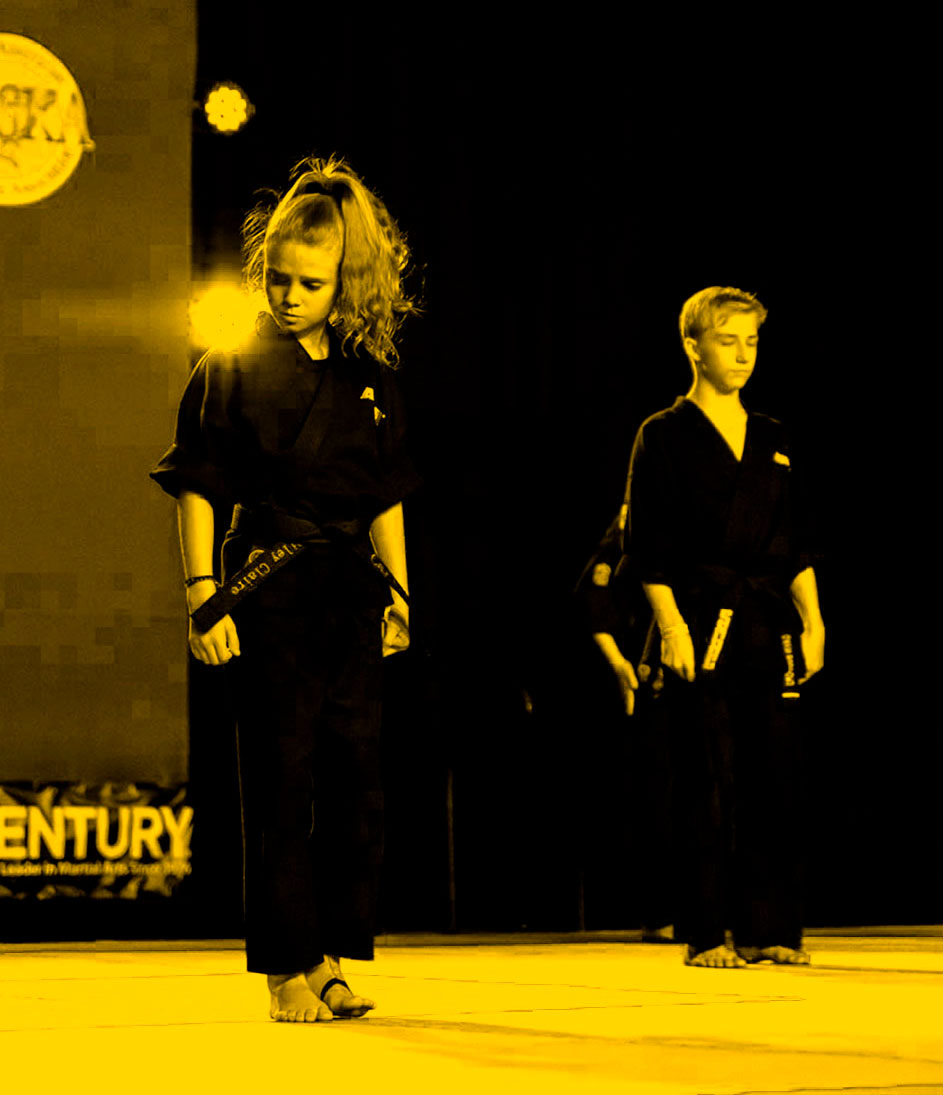
LENGTH OF MATCH: Ninety seconds running-time. (at the 75 second mark, the time keeper will shout out “FIFTEEN SECONDS!”) If a match is tied at the end of ninety seconds, sudden victory (first clash) overtime period will determine the match.
POINT VALUES AND WINNER DETERMINATION: All legal hand techniques that score will be awarded one (1) point. All legal kicking techniques that score will be awarded two (2) points. All fouls as determined by the referee shall result in one (1) penalty point being awarded to the fouling competitor’s opponent.
WHAT IS A “SCORING TECHNIQUE”: A “scoring technique” occurs when a legal sport martial arts technique is scored by a competitor in-bounds and up-right (not considered down) without time being called that strikes his opponent with the allowable amount of focused touch contact and focused control to a legal target area. Focused Touch Contact: the legal amount of contact allowed to certain scoring areas. Focused Control: an amount of controlled force that would have incapacitated the opponent, at least momentarily, if the technique had not been controlled. The judges will evaluate the point scoring (and penalty points) of each competitor and track them on hand held devices in order to help determine the vote for a winner.
WHAT IS A “SCORING COMBINATION”: A “scoring combination” occurs when two or three legal sport martial arts techniques (as defined above) are scored in the sequence of an attack or counter within a clash. A point or points are awarded for each scoring technique that occurs in the combination.
KICKS: Competitors may kick as many times and at as many different targets as they choose within the time and physical limit of a single leg lift. Multiple kicks that occur while a foot remains in the air shall be considered “one technique”. Once the kicking foot touches the ground, if another kick is launched (even with the same foot) it will be considered a second technique (maximum of three techniques per combination/clash)
LEAD-HAND STRIKES: If executed in “quick sequence”, competitors may strike twice in a row with the same lead-hand technique and it will be considered “one technique” (example: bridging the gap with double back-fist strike).Any break in rhythm or timing, or change in technique will result in each strike being considered separately.
REAR-HAND STRIKES: All rear hand strikes will count as a single strike within the three technique limit.
DISENGAGING TECHNIQUE: Competitors are allowed a single disengaging strike that is not considered part of the three (3) technique maximum for each clash combination. This strike must be executed as the competitor is creating space after a clash (disengaging) and be followed by the fighter continuing their disengagement (moving out of range).
LEGAL EXAMPLE 1: Fighter A attacks with jab / reverse punch / back leg double round house kick Fighter B attempts to counter with reverse punch Fighter A steps back and (beginning to disengage) defends with side-kick and CONTINUES TO DISENGAGE TO END THE CLASH
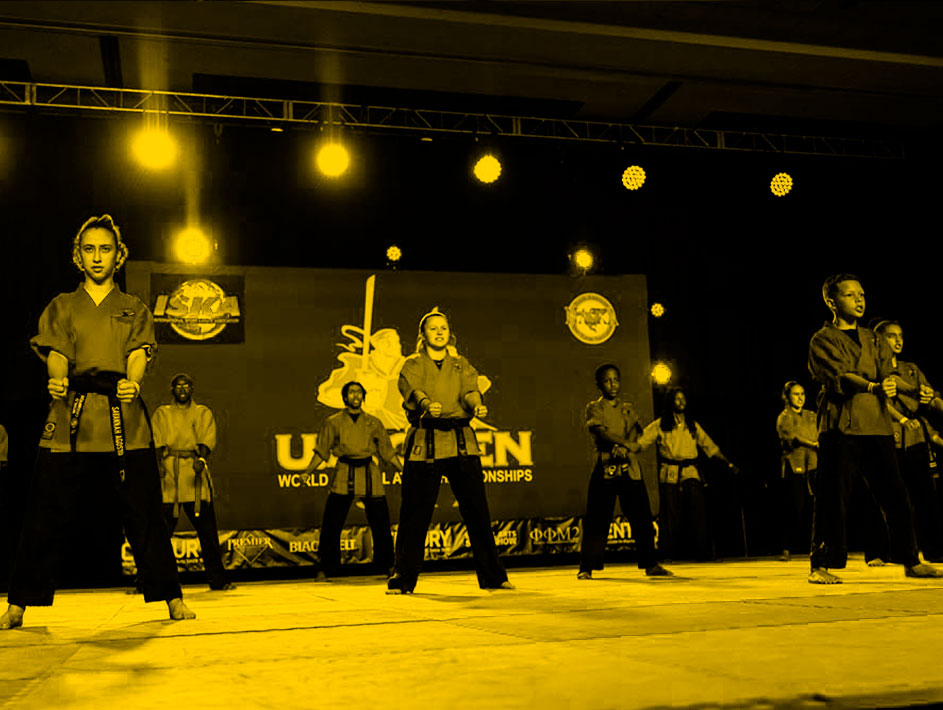
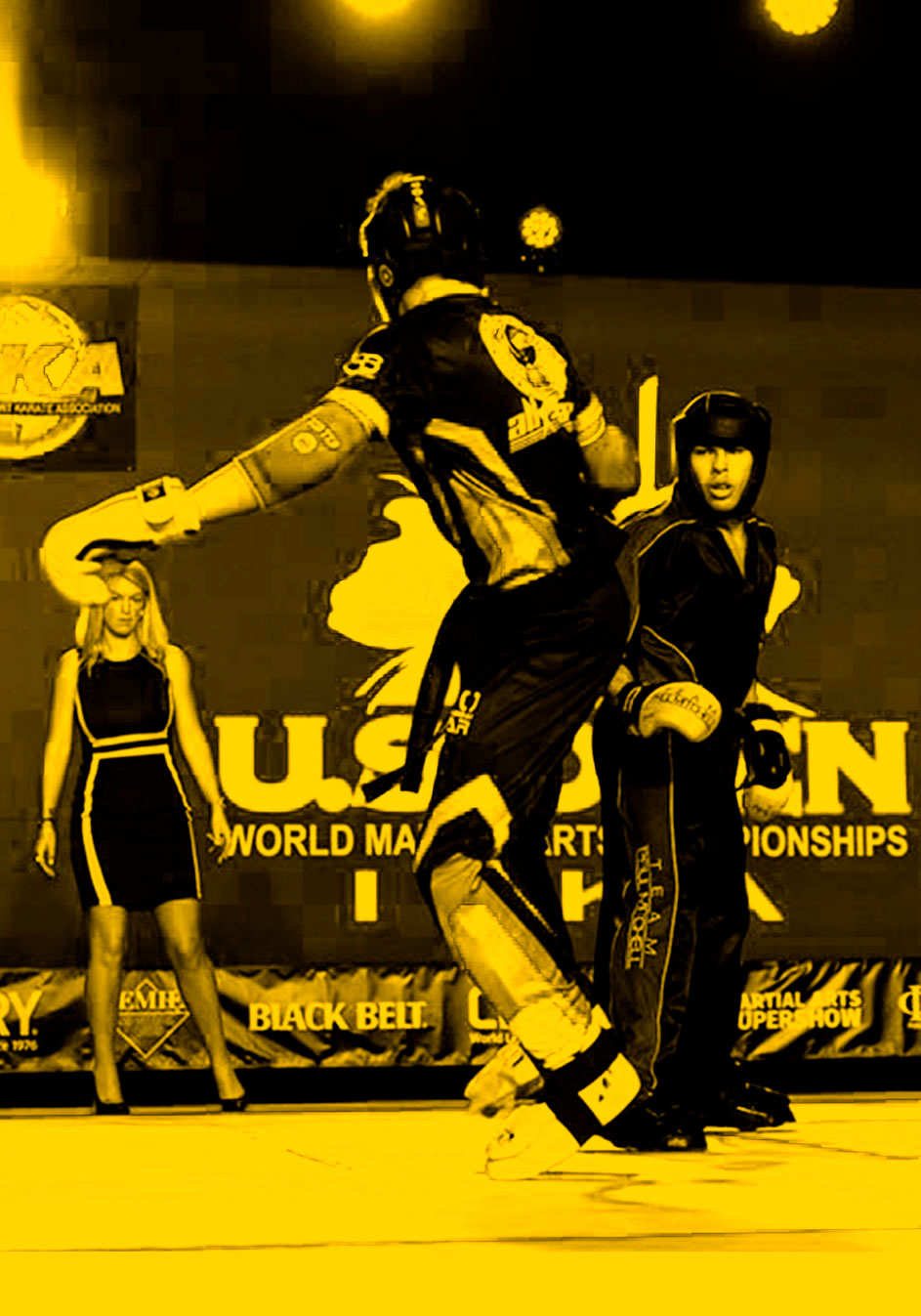
LEGAL TARGET AREAS: Entire head and face, ribs, chest, abdomen, collarbone and kidneys. ILLEGAL TARGET AREAS: Spine, back of neck, throat, sides of the neck, groin, legs, knees and back. NON-TARGET AREAS: Hips, shoulders, buttocks, arms, and feet. LEGAL TECHNIQUES: Legal techniques are all controlled sport karate techniques, except those listed as illegal. ILLEGAL TECNIQUES: Hook punches, Uppercuts, Head butts, hair pulls, bites, scratches, elbows, knees, eye attacks of any kind, take downs on a hard surface floor, ground sparring on a hard surface, any stomps or kicks to the head of a downed competitor, slapping, grabbing for more than one second (as defined below), uncontrolled blind techniques, any uncontrolled throws, takedowns or sweeps and any other uncontrolled dangerous techniques that are deemed unsafe in sport karate.
GRABBING: A competitor may grab the uniform top of his/her opponent in an attempt to score with a sport karate technique for only one second (immediately), after which time he/she must release the uniform. Likewise, the uniform pants may be grabbed for one second to an upright opponent in an attempt to score.
LIGHT TOUCH CONTACT: Means there is no penetration or visible movement of the competitor because of the contact. Light touch is required to all legal target areas in all black belt sparring divisions. The face shield of a headgear along with the headgear is a legal target area.
MODERATE TOUCH CONTACT: Means slight penetration or slight target movement. Moderate touch contact may be made to all legal target areas except the headgear, face shield and face.
WARNINGS AND PENALTIES: One and only one warning is allowed for breaking the rules before a penalty point is awarded. After the first warning is given, a penalty point is awarded for each and every rules violation. If the severity of the first rules violation is deemed by the referee to be too severe, a penalty point can be issued immediately and the first warning will be forfeited. Other Penalty Rules: If, in the opinion of the referee and/or the medical personnel, a competitor cannot continue because of an injury caused by an illegal penalized attack executed by his/her competitor, the offending competitor shall be automatically disqualified. Other Cause for Penalization: Exceeding the maximum allowable number of techniques (three) per clash, consistently executing more than one “disengaging techniques, failing to “break” or create space between the competitors after each clash, attacking illegal and non-target areas, using illegal techniques, running out of the ring to avoid competing, falling to
“BREAKING”: Competitors must “BREAK”, step back, or disengage from their opponent after each clash. When “breaking” the competitors must “step back” or disengage to a distance outside of which they can’t touch each other without moving their feet. Competitors are responsible for self-regulating the break rather than waiting for the referee to take control.
Requiring the referee to take control of the breaks will likely lead to penalization.
PLEASE REMEMBER
Clash Sparring is about scoring and not being scored on, so the sparring strategy needs to be one of “engaging and disengaging”. the floor to avoid competing, continuing after being ordered to stop, excessive stalling, blind, negligent or reckless attacks, uncontrolled techniques, showing unsportsmanlike behavior by the competitor, his/her coaches, friends, etc., excessive contact, and delay of time are just some examples of possible penalization.
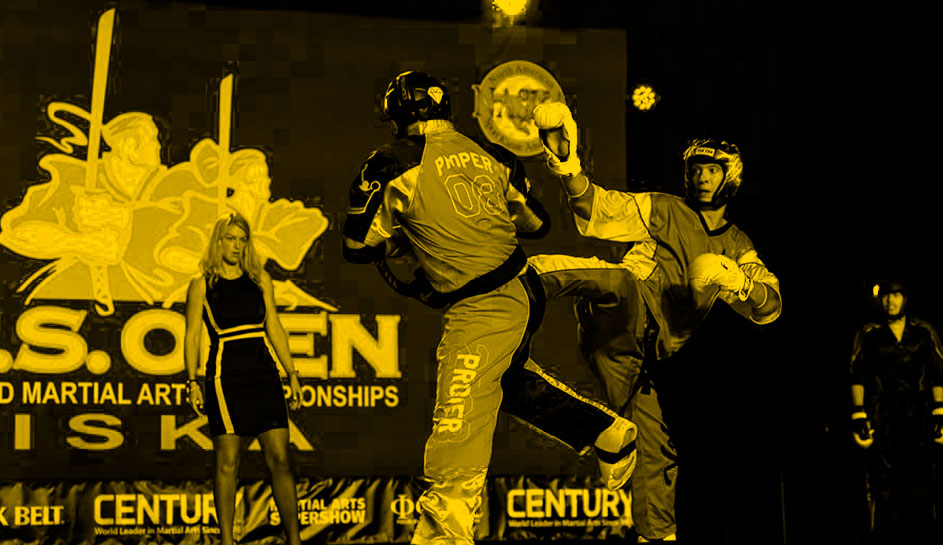
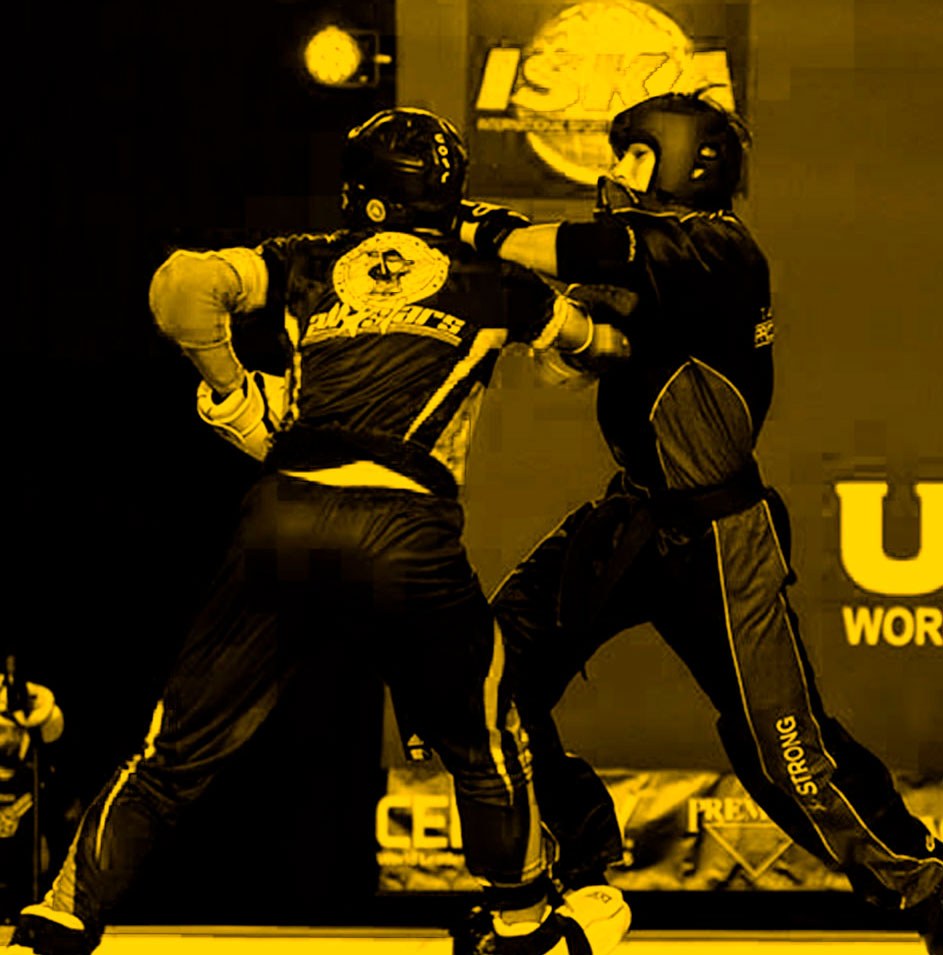
COACHING: The luxury of having a coach is something that most competitors do not have access to. Therefore, it sometimes can become an unfair advantage over a competitor who does not have a coach.
The rules are made and enforced so no one competitor has an advantage or disadvantage over another competitor.
Therefore, coaching is allowed but only under the following guidelines:
1. Never, at any time, can a coach enter the ring without the referee’s permission,
2. No abusive, violent, unsportsmanlike or overzealous coaching;
3. Coaches cannot ask for a time out unless they are protesting a rules violation (only the competitor may ask for a time out),
4. Coaches can never, at any time, interfere with the proper running of the ring or the decisions of the judges. A Coach is defined as anyone who is trying to help one competitor in anyway.
A coach could be but is not limited to a friend, parent, teammate, or an official coach. The center referee can issue a warning to a competitor for each time his/her coach is interfering with a match or disrupting fair play between contestants.
A referee can ask for a disqualification of a contest, but requires a majority vote of all judges.
DISQUALIFICATION: The referee may at their discretion disqualify a competitor for fouling or unsportsmanlike behavior. Non-Competing Penalty: If the referee considers that the competitors are not making an obvious attempt to compete in the true spirit of competition, both competitors will be warned and if it continues, will be disqualified. Wrong Division: If any competitor competes in a division he/she does not qualify to compete in due to age, weight, rank, gender, style, etc., he/she will be disqualified.
OUT-OF-BOUNDS: A competitor is out-of-bounds as soon as he/she does not have at least one foot touching inside or on the boundary line. An out of bounds competitor cannot score a point while out of bounds. In bounds competitor can score on an out of bounds competitor if the center referee has not called stop.
FAIRNESS RULE: If a question arises that is not completely covered by this rule book, the official rules arbitrator may at his/her discretion, overrule, modify or change a delineated rule if he/she believes that enforcing such a rule would result in a inherent unfair outcome to a competitor. However, the rules arbitrator should overrule, modify or change a delineated rule only in extreme cases.
Requiring the referee to take control of the breaks will likely lead to penalization.
PLEASE REMEMBER
Clash Sparring is about scoring and not being scored on, so the sparring strategy needs to be one of “engaging and disengaging”. the floor to avoid competing, continuing after being ordered to stop, excessive stalling, blind, negligent or reckless attacks, uncontrolled techniques, showing unsportsmanlike behavior by the competitor, his/her coaches, friends, etc., excessive contact, and delay of time are just some examples of possible penalization.
